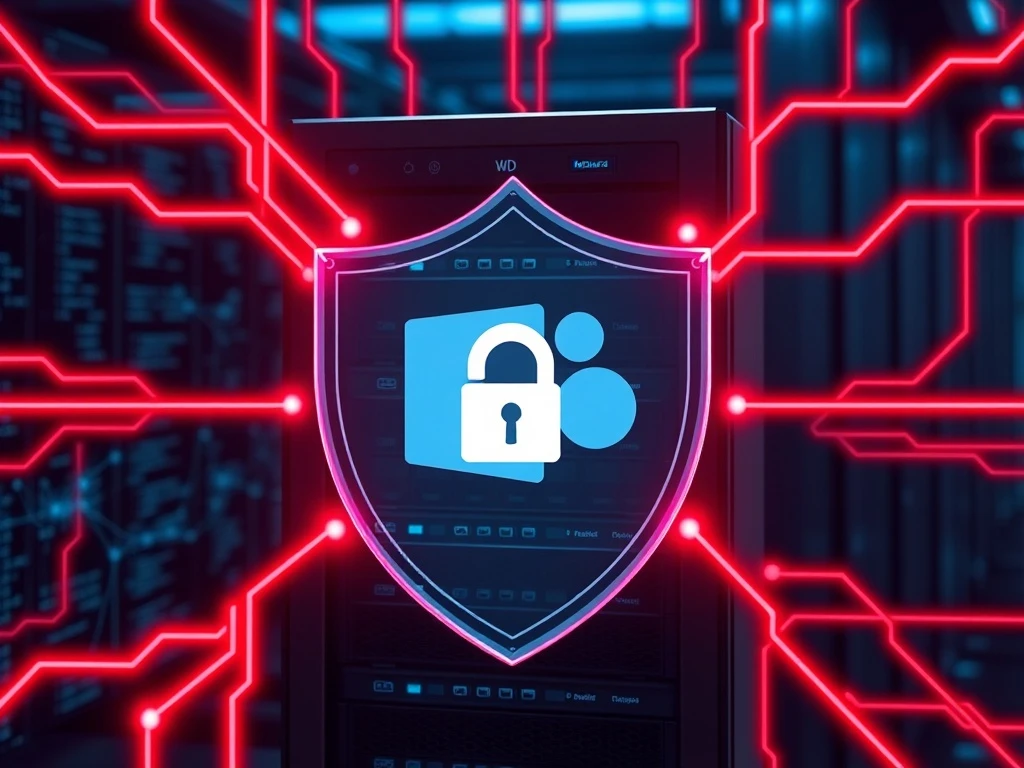Urgent Microsoft SharePoint Patches: Critical Zero-Day Vulnerabilities Under Attack

In the interconnected digital landscape, where the security of our decentralized assets and personal data is a constant concern, it’s crucial to remember that the bedrock of the internet itself is under perpetual assault. While the crypto world often focuses on smart contract audits and wallet security, the recent urgent development involving Microsoft SharePoint reminds us that foundational enterprise software is also a prime target. This incident underscores the relentless nature of cybersecurity attacks and their potential to ripple through various sectors, including those that indirectly support or interact with the crypto ecosystem.
What’s the Urgent Situation with Microsoft SharePoint?
Microsoft has recently released a series of emergency patches to address critical zero-day vulnerabilities affecting its on-premises SharePoint Server software. These vulnerabilities, labeled CVE-2025-53770 and CVE-2025-53771, have been actively exploited in spoofing attacks, leading to the theft of sensitive data and passwords. Organizations worldwide, including governments, businesses, and universities, have been impacted by these threats.
It’s important to clarify that these vulnerabilities are specific to on-premises installations of SharePoint Server. Microsoft has confirmed that its cloud-based SharePoint 365 platform remains unaffected. The patches are cumulative and target specific versions:
- SharePoint Server Subscription Edition
- SharePoint Server 2019
- SharePoint Server 2016
The existence of these vulnerabilities was first publicly disclosed by Netherlands-based Eye Security. Their analysis revealed a large-scale exploitation campaign, with multiple waves of attacks and dozens of systems compromised before Microsoft could issue a fix. This rapid exploitation highlights the severity of the threat and the importance of swift action.
Unpacking the Danger: What is a Zero-Day Vulnerability?
A zero-day vulnerability refers to a software flaw that is unknown to the vendor (in this case, Microsoft) and for which no patch or fix has been publicly released. When attackers discover and exploit such a flaw before the vendor is aware, it leaves users with ‘zero days’ to prepare or defend against the attack. This makes zero-day exploits particularly dangerous and difficult to mitigate.
In the context of Microsoft SharePoint, the exploited zero-day vulnerabilities allowed malicious actors to gain unauthorized access to SharePoint content, including file systems and internal configurations. The Cybersecurity and Infrastructure Security Agency (CISA) noted that the attack chain, known as ToolShell, could also enable attackers to execute arbitrary code over the network, significantly increasing the potential for damage and data compromise.
The Widespread Threat of Cybersecurity Attacks
The recent cybersecurity attacks on SharePoint Server are part of a broader trend of increasing digital threats. Organizations are constantly battling sophisticated attackers who seek to exploit any weakness in their systems. Microsoft, despite its vast resources, has faced scrutiny for security lapses in the past. For instance, a Windows 10 vulnerability was introduced by a security update, and in 2024, the company faced criticism from the United States Congress regarding vulnerabilities that exposed federal officials’ email accounts.
These incidents underscore that even widely used, established software platforms are not immune to determined attackers. The interconnected nature of modern business means that a compromise in one area, such as an enterprise content management system like SharePoint, can have ripple effects, potentially exposing sensitive business data or even credentials that could be used in other attacks, including those targeting financial systems or digital assets.
Your Action Plan: Implementing Emergency Patches
For organizations utilizing on-premises Microsoft SharePoint Server, the immediate priority is to apply the released emergency patches without delay. These cumulative updates are designed to close the security gaps exploited by the zero-day vulnerabilities. Ignoring these patches leaves systems exposed to active attacks and could result in significant data breaches and operational disruptions.
IT administrators should:
- Verify their SharePoint Server version to ensure compatibility with the new patches.
- Download and install the latest cumulative updates for SharePoint Server Subscription Edition, SharePoint Server 2019, and SharePoint Server 2016.
- Follow Microsoft’s recommended patching procedures, including testing in a non-production environment if possible, before deploying to live systems.
- Monitor logs and network activity for any signs of continued compromise or suspicious behavior, even after patching.
Proactive patching is a cornerstone of effective SharePoint security and overall organizational resilience against cyber threats.
Beyond the Patch: Bolstering SharePoint Security
While applying emergency patches is critical, long-term SharePoint security requires a comprehensive strategy. Organizations should regularly review their security posture, implement multi-factor authentication, and conduct regular security audits. User education on phishing and social engineering tactics is also vital, as human error often remains a significant vulnerability.
The incident involving the zero-day vulnerability in Microsoft SharePoint serves as a potent reminder that the threat landscape is constantly evolving. Staying informed about new threats, maintaining up-to-date systems, and fostering a strong security culture are essential practices for any entity operating in the digital world. This vigilance extends to all aspects of an organization’s digital footprint, recognizing that a breach anywhere can potentially impact everything.
The urgent release of emergency patches for Microsoft SharePoint servers serves as a critical wake-up call for organizations worldwide. While the immediate threat has been addressed for on-premises installations, the incident highlights the continuous battle against zero-day vulnerability exploits and sophisticated cybersecurity attacks. For anyone operating in the digital realm, including those involved with cryptocurrencies, this situation reinforces the absolute necessity of robust security protocols, timely updates, and proactive threat intelligence. Staying informed and agile is not just good practice; it’s essential for survival in today’s digital frontier.








